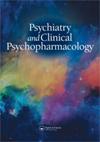Relationships between teacher-reported ADHD symptom profiles and academic achievement domains in a nonreferred convenience sample of first- to fourth-grade students
IF 0.5
4区 医学
Q4 PHARMACOLOGY & PHARMACY
引用次数: 9
Abstract
ABSTRACT OBJECTIVES: Previous studies suggested that inattention was related particularly with reading problems among students. However, most of the former studies had clinically referred samples. A majority of the studies conducted with nonreferred samples have evaluated academic achievement with single or a few parent- or teacher-rated items. Almost none of the studies have investigated reading, writing, and mathematics achievements in a single sample. Data from low- and middle-income countries on the subject are exceedingly scarce. Objectives of the present study were to compare actual measurements of reading fluency, reading comprehension, reading and writing errors, mathematics achievement, and teacher ratings of attention deficit hyperactivity disorder (ADHD) symptoms in a single sample. METHODS: Teachers rated ADHD symptoms in a single, nonreferred, population sample (n = 2493) of first- to fourth-grade students with a SNAP-4 rating scale. Actual measurements of reading fluency, reading comprehension, reading and writing errors, and mathematics achievement were also obtained. Fluid IQ was evaluated with Ravens Progressive Matrices. Students were grouped into Predominantly Inattentive (PI), Hyperactive/Impulsive (HI), Combined (C), or control groups. Univariate and multivariate analyses were conducted. Statistical significance was set at p < .003 after correction for multiple comparisons. RESULTS: We showed that after fluid IQ level and gender were controlled, ADHD-PI and ADHD-C groups (but not ADHD-HI) had significantly lower performance in all academic areas. ADHD-PI increased the risk of being in the lowest performing 10th percentile for reading 3 times, for writing more than 3.9 times, and for mathematics more than 6 times. CONCLUSIONS: We investigated the subtype differences in terms of academic achievement between ADHD-PI, ADHD-HI, and ADHD-C, based on teacher reports. Academic achivement data were not based on teacher or parent reports but on the actual performance of the students using standardized tests. Our results suggested that inattention symptoms must be targeted in primary school students in order to help them have academic achievement similar to their peers.在一至四年级学生的非参考样本中,教师报告的ADHD症状概况与学业成就领域之间的关系
摘要目的:以往的研究表明,注意力不集中与学生的阅读问题密切相关。然而,大多数以前的研究有临床参考样本。大多数对非参考样本进行的研究都是用一个或几个家长或老师评价的项目来评估学业成绩。几乎没有一项研究将阅读、写作和数学成绩作为单一样本进行调查。来自低收入和中等收入国家关于这一问题的数据极其稀少。本研究的目的是比较单个样本中阅读流畅性、阅读理解、读写错误、数学成绩和教师对注意缺陷多动障碍(ADHD)症状的评价。方法:教师用SNAP-4评定量表对一至四年级学生的单一、非转诊人群样本(n = 2493)进行ADHD症状评定。阅读流畅性、阅读理解、读写错误和数学成绩的实际测量结果也得到了。用Ravens渐进式矩阵评价流体智商。学生被分为明显注意力不集中(PI)组、过度活跃/冲动(HI)组、混合型(C)组和对照组。进行单因素和多因素分析。p <有统计学意义。003经多次比较修正后。结果:我们发现,在控制流体智商水平和性别后,ADHD-PI组和ADHD-C组(但不包括ADHD-HI组)在所有学术领域的表现都明显较低。在阅读3次、写作超过3.9次、数学超过6次的测试中,患有多动症的人进入成绩最差的10%的风险增加了。结论:我们根据教师报告调查了ADHD-PI、ADHD-HI和ADHD-C在学业成就方面的亚型差异。学业成绩数据不是基于老师或家长的报告,而是基于学生在标准化考试中的实际表现。我们的研究结果表明,必须针对小学生的注意力不集中症状,以帮助他们取得与同龄人相似的学业成绩。
本文章由计算机程序翻译,如有差异,请以英文原文为准。
求助全文
约1分钟内获得全文
求助全文
来源期刊

Psychiatry and Clinical Psychopharmacology
Medicine-Psychiatry and Mental Health
CiteScore
1.00
自引率
14.30%
发文量
0
期刊介绍:
Psychiatry and Clinical Psychopharmacology aims to reach a national and international audience and will accept submissions from authors worldwide. It gives high priority to original studies of interest to clinicians and scientists in applied and basic neurosciences and related disciplines. Psychiatry and Clinical Psychopharmacology publishes high quality research targeted to specialists, residents and scientists in psychiatry, psychology, neurology, pharmacology, molecular biology, genetics, physiology, neurochemistry, and related sciences.
 求助内容:
求助内容: 应助结果提醒方式:
应助结果提醒方式:


